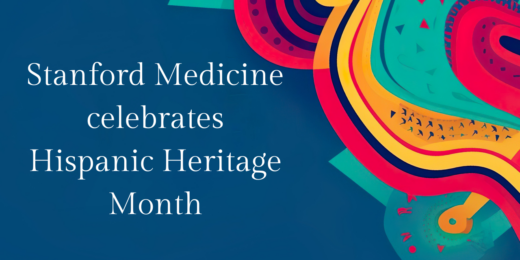As many of Stanford Medicine's OB/GYN scientists listened to community leaders and researchers at a birth equity seminar in May of 2022, physician-scientist Irogue Igbinosa, MD, began to wonder what information about vulnerable populations might be hidden in a large cache of pregnancy data she was studying.
The seminar, part of Stanford Medicine's activities for Asian American, Native Hawaiian/Pacific Islander Heritage Month, highlighted that people of AANHPI heritage come from many backgrounds, including around 50 different ethnic groups. But these diverse groups are often lumped together in population-based research, which can obscure important medical differences between them, the seminar's instructors pointed out.

The seminar was part of a larger, NIH-funded research project at Stanford Medicine to explore disparities among AANHPI pregnant moms. Its discoveries have included, for instance, a 2022 study of new mothers which found risk factors for poor birth outcomes are unevenly distributed across 15 different AANHPI populations within California.
The problem rang a bell with Igbinosa. She and her team were midway through a study of how anemia in pregnancy is linked to childbirth complications such as hemorrhage.
"When talking about anemia, we often present a statistic that is a composite of everybody -- 10 to 15% of pregnant people have anemia -- which doesn't tell the story of the challenges different populations may be facing," said Igbinosa, an obstetrician-gynecologist at Stanford Medicine.
She knew, for example, that Black women are more likely than members of any other demographic group to experience anemia in pregnancy. Her study aimed to show how anemia status, race and ethnicity combine to influence an individual's risk while giving birth.
Fueled by the advocacy presented during AANHPI Heritage Month, to better understand what might affect birth risks in AANHPI patients, Igbinosa and her colleague Stephanie Leonard, PhD, modified their analysis of nearly 4 million California birth records to differentiate Asian and Native Hawaiian/Pacific Islander people into two groups, rather than the combined analysis that is traditionally performed.
They also included American Indian and Alaska Native people as a distinct racial/ethnic group. The large size of the data set and the fact that women giving birth had self-reported their race/ethnicity made these more granular analyses possible, Igbinosa said.
"We did this because of a call to action from the AANHPI communities about how they felt their experiences were different," Igbinosa said. "We found that the data in our study reflected what we were hearing from them."
The research, described in a Stanford Medicine news story and published in September in Obstetrics and Gynecology, found that Black patients were most likely to have anemia during pregnancy, with 21.5% of that population affected. The next-most-affected groups were people of Pacific Islander heritage (of whom 18.2% had anemia during pregnancy) and American Indian/Alaska Native patients, of whom 14.1% were anemic. Hispanic, Asian and White patients had lower rates of anemia, at 12.6%, 10.6% and 9.6% respectively. There were also differences by race/ethnicity in how much anemia contributed to patients' risk of birth complications.
Knowing who is most at risk for anemia and birth complications could help guide culturally tailored public-health efforts to address the problem, Igbinosa said, adding that the higher risk among Pacific Islander patients surprised her and she was grateful for the seminar that gave her team the idea to change their analysis.
"This is an important area of advocacy," she said.
Image: LIGHTFIELD STUDIOS (stock.adobe.com)






